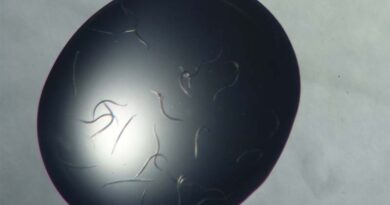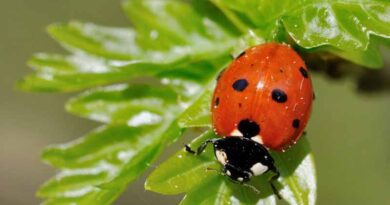Seek and destroy: use of nematodes for insect pest control
06 December 2022, Japan: This article was originally published on the CABI BioProtection Portal blog. Visit the original blog post here.
With many insecticides being banned from use in agriculture due to their harmful effects on users and the environment, nematodes can offer an effective alternative to controlling these insect pests. They are particularly useful in managing pests that are difficult to target such as white grub and cutworm larvae which are found in the soil.
Nematodes, or more specifically insect killing (entomopathogenic) nematodes (EPNs), can be found naturally in the environment as parasites of insect larvae. Nematodes from two genera, Steinernema and Heterorhabditis, are used globally to control major insect pests within a range of different crop production systems.
Nematodes are a useful tool for the management of insect pests as they;
· Can be used in field, covered and orchard crops, as well as turf
There are many commercial examples of the use of EPNs: in field crops to control soil-dwelling insect larvae of cutworms (Agrotis spp.), in glasshouse crops to control larvae of fungus gnats (Bradysia spp.), in fruit orchards to control codling moth (Cydia pomonella) and white grubs (including Japanese Beetle, Popillia japonica) of turf grass.
· Can be applied to solid substrates (soil, compost etc) or aerially (foliage or stems)
· Can actively search for the target pest, depending on the species
For example, Steinernema carpocapsae utilizes an “ambush” strategy, waiting near the soil surface for target hosts, whilst Heterorhabditis bacteriophora has a “cruiser” strategy, seeking out its target.
· Have specific and narrow host ranges
The EPNs are parasites of insects and the range of targets can vary with S. feltiae, for example, attacking Coleoptera, Diptera, Lepidoptera and Hymenoptera, whilst in contrast, H. bacteriophthora only attacks Coleoptera, mainly Scarabidae. To see how the nematodes interact in a living system, see https://www.youtube.com/watch?v=jM4kZsQntxU
· Are unlikely to promote resistance within host insects
The EPNs themselves will not kill a host insect; this requires the EPNs symbiotic bacteria. When an EPN enters a host insect larva they release their symbiotic bacteria which kill the insect host. The bacterial enzymes then digest the larva and the EPNs feed on the products. To see an animated explanation of the mode of action, go to https://www.youtube.com/watch?v=kohR7sdCbAE&feature=emb_rel_end
· Are considered safe by national authorities, for the environment, users and consumers
The EPNs and their associated symbiotic bacteria have been shown to have no harmful effects to humans or other vertebrates. Any non-target effects on field populations of invertebrates are considered to be short-lived.
· Will not feed on plant material
The EPNs are not related to plant parasitic nematodes and do not utilize plant material as a food source.
· Do not produce any residue in crops
· Reduce the need for chemical pesticides
· Can be applied using existing spray or irrigation systems
When using conventional spray equipment or overhead irrigation, make sure to remove filters and sieves, and ensure the nozzles are of at least 0.5mm diameter, and use low pressure to prevent damaging the EPNs.
· Can be used with other biological agents or integrated pest management (IPM) components
EPNs can be applied together with other biologicals such as Bacillus thuringiensis (Bt) or conventional insecticides such as Imidacloprid to manage insect pests, often with synergistic effects or the effective use of lower doses of insecticides.
· Can be used in organic farming
A successful example of the use of beneficial nematodes in the UK is the control of vine weevil (Otiorynchus sulcatus) in
Also Read: Promoting Agricultural Transition in Asian Mega-Deltas
(For Latest Agriculture News & Updates, follow Krishak Jagat on















